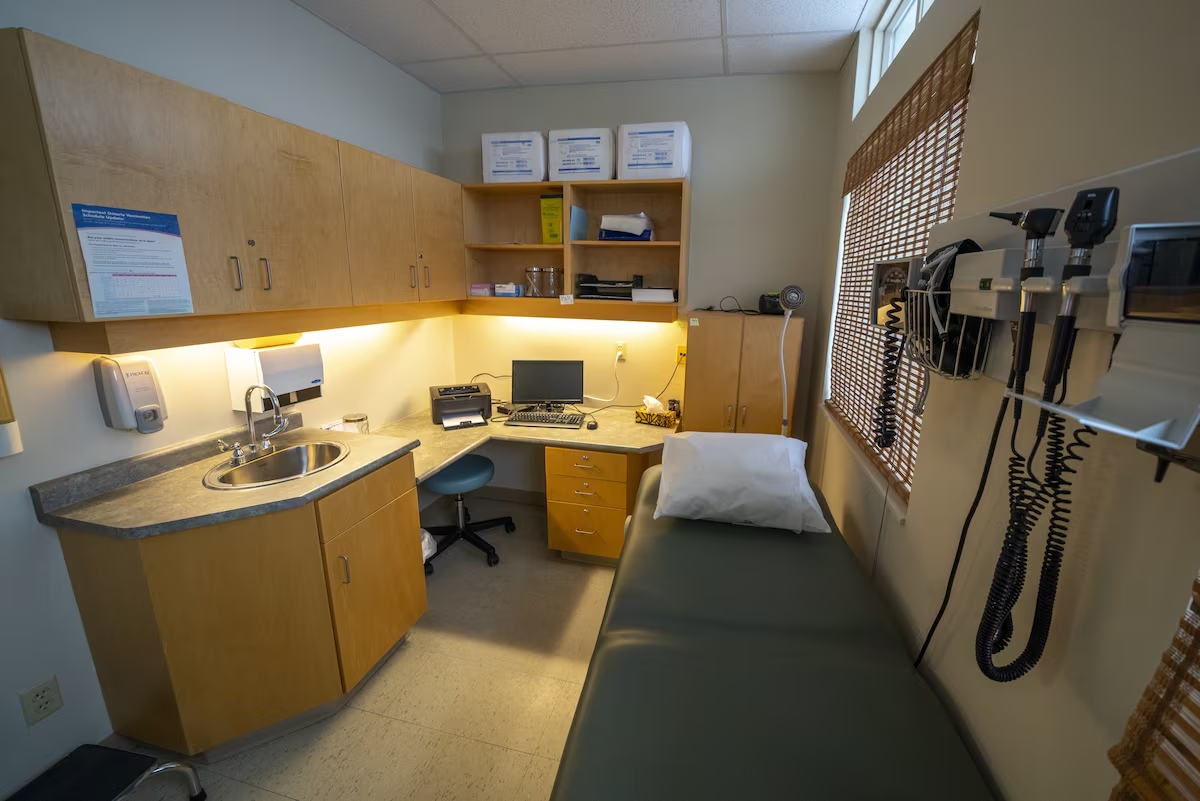
The Family Clinic in Marathon, Ont., on Nov. 11, 2022. Fewer family medicine training slots went unfilled this year than in any of the past three years, according to the Canadian Resident Matching Service. DAVID JACKSON/THE GLOBE AND MAIL
More new medical school graduates will train to be family physicians in Canada this year than ever before, a development that will help but not solve a primary-care crisis that has left millions without a family doctor.
A total of 1,627 graduates from medical schools in Canada and abroad will become family medicine residents this summer, up from 1,529 last year, according to the organization that matches fledgling physicians with crucial hands-on training positions.
The increase isn’t solely due to provincial governments funding more residency placements in family medicine, although 73 new spots in the discipline were added nationwide this year.
It’s also a reflection of the fact that fewer family medicine training slots went unfilled this year than in any of the past three years, according to the Canadian Resident Matching Service, which released the final results of its annual matching process on Thursday.
The matching service, known as CaRMS, said 75 family medicine residency slots were left vacant, down from 100 last year, 99 in 2022 and 89 in 2021. The majority of this year’s unclaimed family medicine spots – 70 of the 75 – were in Quebec, a province that has long struggled to fill its quota for future GPs.
“Family medicine has gotten to such a crisis point,” that key players from provincial politicians to medical school leaders to doctors’ associations are finally giving the shortage the attention it deserves, said Michael Green, president of the College of Family Physicians of Canada and head of the department of family medicine at Queen’s University.
“I’m very happy with these results,” he added.
The national residency match is garnering extra attention because of the country’s dire need for primary care. The proportion of Canadian adults who reported having a doctor or a regular place to go for medical care dropped to 86 per cent in 2023, down from 93 per cent in 2016, the Canadian Institute for Health Information said last month as it released the findings of a 10-country survey led by the Commonwealth Fund, a non-profit health research organization in the United States.
Canada placed last in primary care access, behind the ninth-place U.S.
The roots of the problem are varied. Older doctors with large patient rosters are retiring, while younger doctors are shying away from full-time, office-based primary care because of the administrative burden and comparatively low take-home pay.
At the same time, Canada’s population of newcomers is surging as a rising tide of older Canadians with chronic illness requires more of their doctors’ time. A separate report from CIHI last month found the average number of patients seen by a family physician per year has decreased, and more doctors trained in family medicine are choosing to work outside of primary care in places such as emergency departments.
Residency is a training period of two or more years that all doctors must complete to be licensed to practise independently. CaRMS oversees a two-round process that matches medical-school graduates to placements in different disciplines and locations offered by the country’s 17 faculties of medicine.
Ontario is preparing to open two new medical schools, one in the medically underserved city of Brampton in 2025, and another in Vaughan in 2028 focused on family medicine.
After the results of the first round of the match were released in March, some medical school leaders expressed concerns at the number of vacancies in family medicine. In Ontario, for example, 108 of 560 family medicine residency slots in Ontario were unfilled after the first iteration, up from 100 last year, 61 in 2022, 52 in 2021 and 30 in 2020.
But when second-round results were released on Thursday, all but two spots reserved for military doctors were filled in Ontario, the majority of them with graduates of international medical schools.
Many of those students are Canadians returning home after completing a medical degree abroad, Dr. Green said. CaRMS matched more international graduates to residency spaces this year than ever before: 671, up from 555 last year and 439 in 2022.
Constance LeBlanc, president of the Association of Faculties of Medicine of Canada, said medical educators are keenly aware of the primary-care crisis and have been trying to play up the joys of a career in family medicine.
“The undergrad deans and the deans of medicine have worked hard to include family medicine in a more meaningful way across their curriculum,” Dr. LeBlanc said, “and to foster experiences in family medicine that allowed people to see that it’s an interesting and a rewarding and valuable practice.”
Those efforts don’t seem to be bearing fruit in Quebec, where medical schools are limited to offering residency placements to candidates who speak French. The 70 residency placements that went unfilled in the province were mostly in rural areas.
“It’s a catastrophe,” said Jean-Joseph Condé, a family doctor in Val-d’Or and the Quebec representative for the Canadian Medical Association. “It means incoming doctors are turning their back on family medicine in Quebec. It’s a catastrophe because there’s already a shortage of family physicians.”
KELLY GRANT
HEALTH REPORTER
The Globe and Mail, April 25, 2024
